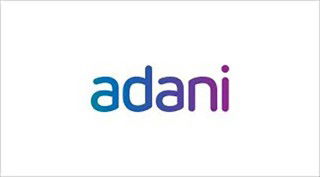This week HeidelbergCement and Calix announced that the Low Emissions Intensity Lime And Cement 2 (LEILAC-2) carbon capture project has passed its Financial Investment Decision (FID) milestone and can go on to the implementation phase at HeidelbergCement's Hanover cement plant, Germany.
The LEILAC-2 project has been awarded EUR16m funding by the EU Horizon programme and aims to separate 20 per cent of Hanover cement plant’s CO2 emissions or around 100,000t of CO2 per year. This will scale up the original LEILAC-1 project at the Lixhe cement plant in Belgium, where HeidelbergCement has been targeting capture of 240tpd of CO2 or 25,000t per year. Therefore, the LEILAC-2 installation will be four times the size of the Lixhe project. Overall, HeidelbergCement has targeted CO2 reductions of up to 10Mt by 2030 with several carbon capture utilisation and storage (CCUS) projects already underway across its portfolio of plants.
Dr Dominik von Achten, chairman of HeidelbergCement's Managing Board, said: "We are very pleased to advance this key technology at industrial scale at our plant in Hanover, Germany. The location is ideally suited for further utilisation and/or transport to offshore storage of the captured CO2."
Scaling up to industrial plant level
The LEILAC-2 technology is low-cost, scalable, replicable and retrofittable, claims HeidelbergCement. Starting with the fully operational Hanover plant, the project looks to show how the design can be retrofitted to all existing cement plants without dramatically increasing their costs. Fully-developed, supported, and accepted use and storage infrastructure will be required to ensure the CO2 is not ultimately released into the atmosphere.
LEILAC-2 aims to also demonstrate the overall efficiency of the technology, as the reactor will be integrated into the kiln line in a kind of second preheater string configuration. In this configuration, the calcined material is directly fed to the existing rotary kiln so that the impact on clinker quality as well as the energy efficiency can be demonstrated. The demonstration plant will also show the applicability of less carbon intensive heat sources for the required calcination heat, ie the use of electricity and alternative (biomass-rich) fuels.
Electrification will be tested for fast ramp up/down times for the process and rapid switching between fuel and electricity. This will enable the plant to be used intermittently by the grid. Analysis of the potential destination, use processes and storage of captured CO2 will also be undertaken, although there are no plans to store the CO2 from the demonstration plant in Hanover.
Engineering is supported by HeidelbergCement, IKN, Cemex, Cimpor, Certh, Engie Laborelec, Polimi Port of Rotterdam, GSB, CERTH, LEAP, Engie, Lhoist and Calix. With the aim of achieving a commercially relevant solution as quickly as possible and addressing the main remaining risks as fully as possible, this plant aims to become operational by 2023.
The cost and benefits of Calix's CCUS
Current estimates from the LEILAC consortium suggests that LEILAC-2 may separate CO2 at a cost of around EUR10/t of CO2 extra OPEX (above the host plant’s operating costs). This excludes compression costs and capex retrofit depreciation costs that will be around EUR10-15/t of CO2. Therefore, the project aims to abate and deliver carbon capture at EUR20-25/t of CO2.
Some of the benefits of the Calix technology, which make it highly attractive to the cement sector, include the ability to retrofit plants with upgraded calciners in modular form, being able to combust hydrogen, biomass and use renewable fuels, capturing a pure CO2 which is kept separate from kiln exhaust gases, while eliminating need for additional chemicals or processes and electrification to the grid.
"If the LEILAC-2 plant can reach its nameplate capacity, this EU funded plant may capture EUR7.5-9.5m worth (EU ETS) of CO2 annually for a total annual operating cost of EUR2m," claims Calix.
Commenting on the FID decision to proceed with implementation of LEILAC-2, Phil Hodgson, Calix's MD, said: "The positive FID decision marks a significant milestone and further demonstrates the momentum which is building around the LEILAC-2 project. The completion of the FEED has been achieved despite the challenging circumstances and is a testament to the strong level of collaboration which has been cultivated between the consortium partners, who have all worked together to make significant progress on this breakthrough project."
A comprehensive guide to the current carbon capture projects being employed and tested by the cement industry features in the April 2022 issue of International Cement Review. More than 40 projects are detailed in the worldwide report.
